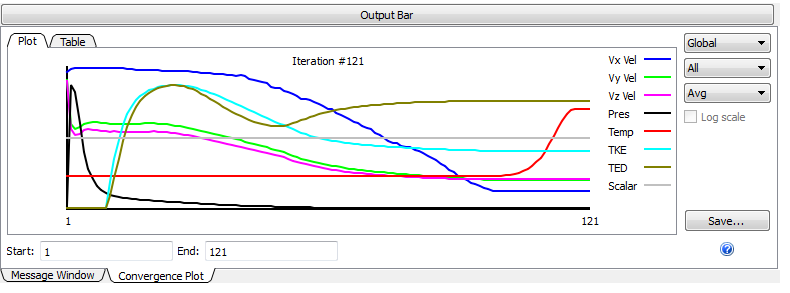Chapter 12: Can I Trust my Results?
Previous: Exercise 5 | Next: Exercise 6
Every Autodesk® CFD analysis is made up of multiple iterations. An iteration is a numerical sweep through the entire model. The convergence of each degree of freedom (quantity) is plotted on the Convergence Monitor.

Early in the analysis, the results change a lot from one iteration to the next. The convergence lines may oscillate up and down. Horizontal convergence lines indicate when the results stop changing and that the solution is "converged."
Numerous iterations are required to attain full convergence. The number varies based on the application and physics. Convergence can be determined automatically or manually. Automatic Convergence Detection assesses the progress of the solution, and stops the analysis when it satisfies certain numerical criteria. This can occur before the number of specified iterations is reached.
Convergence must be reached before results can be assessed quantitatively. Trends can be assessed qualitatively earlier in the analysis, before complete convergence is reached.
Automatic Convergence Assessment:
Autodesk® CFD constantly examines small and large frequency changes throughout the solution field, and evaluates the local and global fluctuations of each degree of freedom. Automatic Convergence Detection determines when a solution is converged, and automatically stops the analysis. (Converged = when the solution stops changing.) This is indicated by the conclusion of the analysis prior to reaching the number of iterations prescribed by the user. It is also accompanied with a message in the Output Bar that flat lines have been detected.
Manual Convergence Assessment:
Flow phenomena such as recirculation naturally cause some quantities to fluctuate. The curves may not flatten and automatic convergence may not be attained. To manually determine convergence:
- Examine the curves in the Convergence Plot.
- Assess convergence curves for key quantities such as pressure, temperature, and the primary velocity component.
- Flat lines indicate convergence